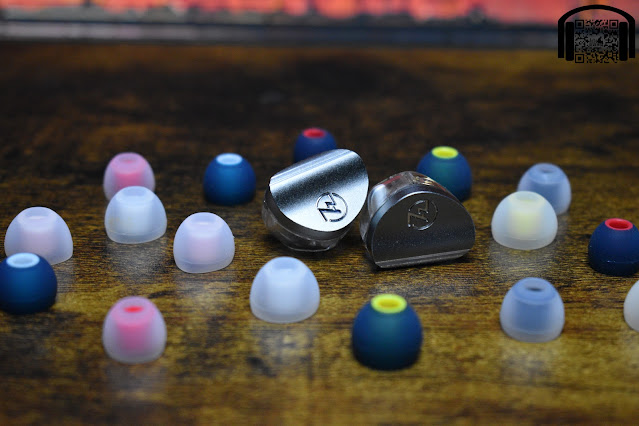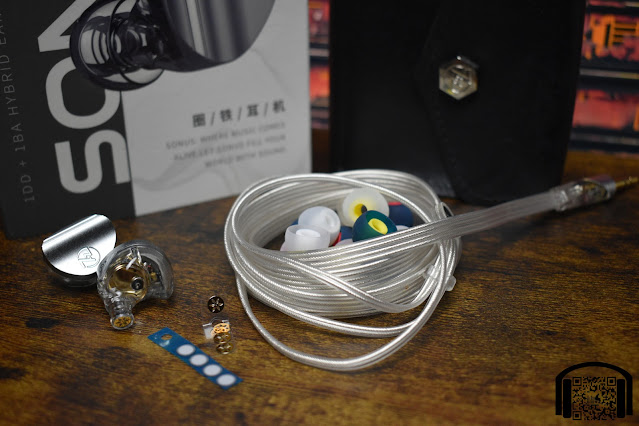- Get link
- X
- Other Apps
English | Español
TLDR version on YouTube: TDLR - 7Hz Sonus
The 7Hz Sonus have been sent to me by Linsoul in exchange for the publication of this review. Linsoul, as always, have not made any requests or comments and I aim to do my best to be as unbiased as humanly possible.
You can find the 7Hz Sonus via Linsoul here: https://www.linsoul.com/products/7hz-sonus
The above link is non-affiliate.
To avoid being repetetive in my reviews, you can find all the info about how I create the reviews, equipment used, how I receive the products and how to interpret my reviews by visiting: About my reviews
Intro…
For those that follow my reviews, you may remember that, when I reviewed the 7Hz Legato I said “With 7Hz I have found that I don’t have a middle ground with them, out of 5 sets I have tried, 3 I have found to be very good and the other 2, well, let’s just say that they are not my thing.”
Well, the Sonus are set number six and have equaled the score board.
(EDIT: After a few people have notified me of my error, I have reached the conclusion that my maths leave a lot to be desired in this review. More info at the end of the review)
Using a hybrid design of a single dynamic driver paired with a single balanced armature driver, I find them to be very coherent and well balanced, making for a very enjoyable listen.
Coming in at just under 50€, placing them inside what I consider to be ultra budget sets, that makes them even more interesting.
So, here are my findings and opinions on the 7Hz Sonus.
Presentation…
The presentation from 7Hz is usually pretty decent for whatever price bracket the specific model sits in and the Sonus are no exception. While there is nothing exactly spectacular about the unboxing experience of the Sonus, they do arrive in packaging that is not just thrown together and include the necessary accessories that we have come to expect at this price point.
An orange box, inside a grey and white cardboard sleeve with images and specs, opens to reveal a clear plastic semi-rigid frosted cover. The cover lifts to reveal the IEMs in their corresponding cutouts, cable attached, with the accessories placed underneath.
As far as contents we obviously get the IEMs and cable, along with a simple but elegant storage/transport pouch, 8 sets of the multicolour coded tips we are accustomed to from 7Hz, and 2 sets of spare filters, both mesh and metal.
Again, I have to say that, while nothing is amazing and game changing, I can find no reason to complain about the presentation or accessories included with the Sonus.
Build and aesthetics…
One thing that 7Hz has a habit of doing is making their IEMs aesthetically different. Even the ones like these, which opt for a more generic shape in comparison to some of their other models, still have their own look to them.
The transparent (medical grade) resin shell is paired with an aluminium faceplate which has a curved, stepped, design to it. The 7Hz logo is engraved on the metal face plate and, while it is not exactly “out of this world” as far as aesthetics, it does look good and has an elegant vibe to it.
The IEMs are comfortable, lightweight and seem to be well built. I have had no issues with them as far as comfort, choosing to use the tips with the white core for this review.
The included cable is a four core in a ribbon style layout. This is not the first time I have received a cable like this with IEMs and, as with the previous cables of this style, I actually am quite fond of it. While it does look like it may be bulky and uncomfortable to use, I find it is actually the opposite, at least when using the IEMs while sitting at my desk.
For sub 50€, the aesthetics, build and accessories are all more than adequate.
Sound…
All tracks mentioned are clickable links that allow you to open the reference track in the streaming service of your choice (YouTube, Tidal, Qobuz, Spotify, etc.)
The last couple of sets of IEMs that I have reviewed were not exactly enjoyable but sitting down to listen to the Sonus, I have to say that I like them. No, they are not something that provide never before heard music, yet they perform very well within their safe but (to me) enjoyable tuning.
Here is the graph of the Sonus in relation to my personal preference target:
While the subbass may seem a little more elevated than my personal preferences, the slope of the subbass into the midbass makes for a tuning that I am very fond of. Listening to “Chameleon” there is no shortage of subbass, yet that ramp down into the midbass stops things from becoming overpowering.
Subbass is also clean and fairly fast in its resolution. Things don’t become too “sludgy” in those areas, with things like that slight dirt in “Royals” being apparent without taking over.
Midbass is by no means overpowering, with my usual test of “Crazy” being rather clean whilst not missing any body to the low end of the guitar. I wouldn’t say that the dynamic driver is the best performing driver I have heard in the these low ranges yet the tuning favours it, due to no sense of muddyness or boominess, so details are appreciated.
The midrange starts to climb quite early, peaking around 2kHz and then dipiping slightly up to the 4kHz mark. This, in addition to a quite tame midbass range, can make certain vocals seem to have less body than on other options, such as Rag’n’Bone man in “Human (acoustic)”.
Listening to “Billie Jean” by The Civil Wars, I find the female vocals to suffer less from this than the male vocals. The male vocals are still quite pleasant but I feel that either a slight touch of warmth in the lower ranges or less of a dip in the 2k to 4k mark would have have worked better in favour of both the male vocals and the strikes on the strings of the guitar in this track.
The BA used for these upper ranges is fairly detailed and, with the help of the tuning, does keep layers well separated and details quite present, such as the vocal layers of “Strange Fruit” or the (accidental?) bird chirp during the intro. Again, a slight bit of extra body to the voice of Dominique Fills-Aimé would have been nice but I still enjoy the presentation.
Things that do have a bit more of musical presence with the vocals, such as “No Ordinary Love”, don’t emphasize this as much, keeping a nice clean presentation throughout.
As we move into the higher ranges, there is no real roll off, at least as far as my personaly auditory capacities go. It is not the smoothest of treble areas but it is not terrible either. Sibilande is kept in check pretty well on “Code Cool”, maybe placing Patricia Barber around a +1 (on my -12 to +12 scale), which is nice when taking into consideration the general tuning. It also portrays a nice sensation of air and openness.
Sound stage is also pretty decent, not huge but enough to enjoy a sensation of width, with details assisting in the placement of images, which may not be milimetric but are still fairly good.
Conclusion…
Whether or not the Sonus is for you is going to heavily depend on your preferences as far as tuning. This is obviously always something that comes into play, but what I am referring to is that, if you are someone who likes a nice clean presentation, without any midbass boost and leaning more towards the cooler side of things, then I think they are a great set of IEMs that should definitely be considered in their price range.
If you are more on the warmer side of things in your preferences, with more of a bass boost and more body in the lower end, then I think that other sets will meet your criteria much better.
I would look at the Sonus as a bit of step up in performance from 7Hz’s own Salnotes Zero, where the tuning is similar but the detail and openness is improved. To be honest, I do think I prefer the 2kHz to 5kHz tuning on the Zero, seemingly a little smoother to my ears, but for the rest, I think the Sonus could be considered an upgrade without taking too much of a step up in price.
As I said at the beginning, I have reviewed 6 sets of 7Hz IEMs and the score is now level at 3 I like versus 3 that aren’t for me.
(EDIT: As I mentioned above, my maths in this review are terrible!
In reality, the Sonus so not equal the scoreboard, they actually put it 4-2 in favour of the models that I do like!
The 7Hz models that I have reviewed and if I like them or not:
Timeless =Yes
Eternal = No
Dioko =Yes
Zero =Yes
Legato = No
Sonus =Yes
My apologies for the confusion!!)
All FR measurements of IEMs can be viewed and compared on achoreviews.squig.link
All isolation measurements of IEMs can be found on achoreviews.squig.link/isolation
To comment or contact, visit any of the following social media platforms:







